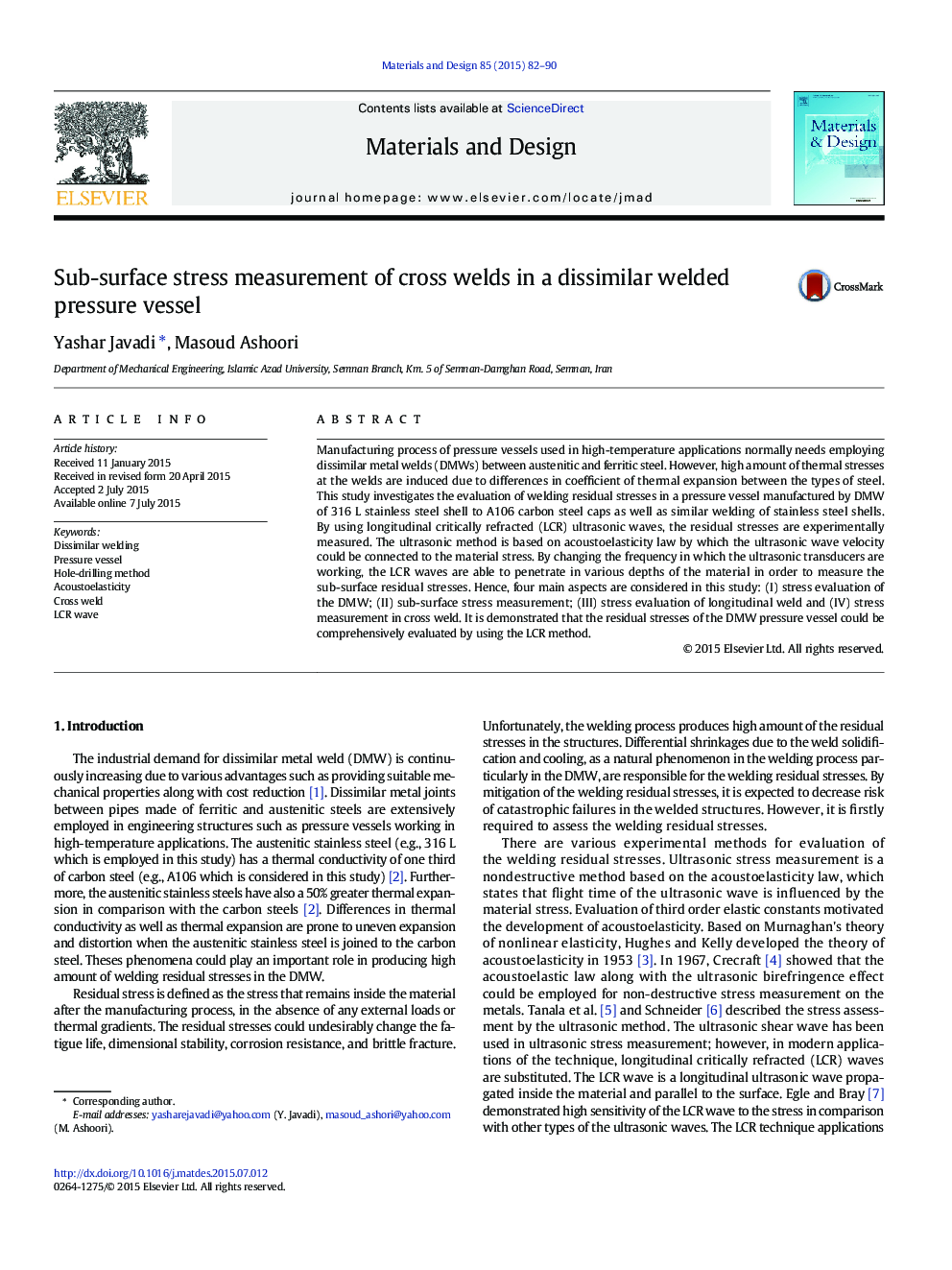| Article ID | Journal | Published Year | Pages | File Type |
|---|---|---|---|---|
| 828275 | Materials & Design | 2015 | 9 Pages |
•Welding residual stresses in a pressure vessel manufactured by DMW are studied.•Sub-surface stress measurement is also considered by using the ultrasonic method.•The stresses are also evaluated in cross welds.•Residual stress of DMW vessel could be comprehensively evaluated by LCR method.
Manufacturing process of pressure vessels used in high-temperature applications normally needs employing dissimilar metal welds (DMWs) between austenitic and ferritic steel. However, high amount of thermal stresses at the welds are induced due to differences in coefficient of thermal expansion between the types of steel. This study investigates the evaluation of welding residual stresses in a pressure vessel manufactured by DMW of 316 L stainless steel shell to A106 carbon steel caps as well as similar welding of stainless steel shells. By using longitudinal critically refracted (LCR) ultrasonic waves, the residual stresses are experimentally measured. The ultrasonic method is based on acoustoelasticity law by which the ultrasonic wave velocity could be connected to the material stress. By changing the frequency in which the ultrasonic transducers are working, the LCR waves are able to penetrate in various depths of the material in order to measure the sub-surface residual stresses. Hence, four main aspects are considered in this study: (I) stress evaluation of the DMW; (II) sub-surface stress measurement; (III) stress evaluation of longitudinal weld and (IV) stress measurement in cross weld. It is demonstrated that the residual stresses of the DMW pressure vessel could be comprehensively evaluated by using the LCR method.
Graphical abstractFigure optionsDownload full-size imageDownload as PowerPoint slide
